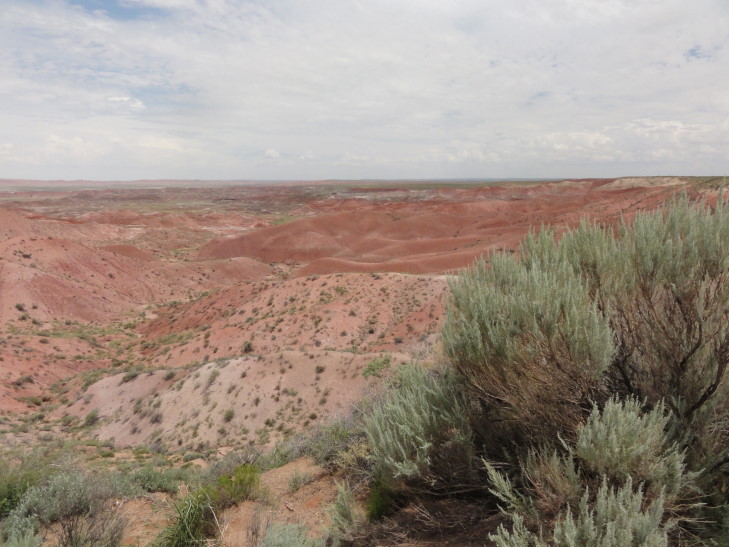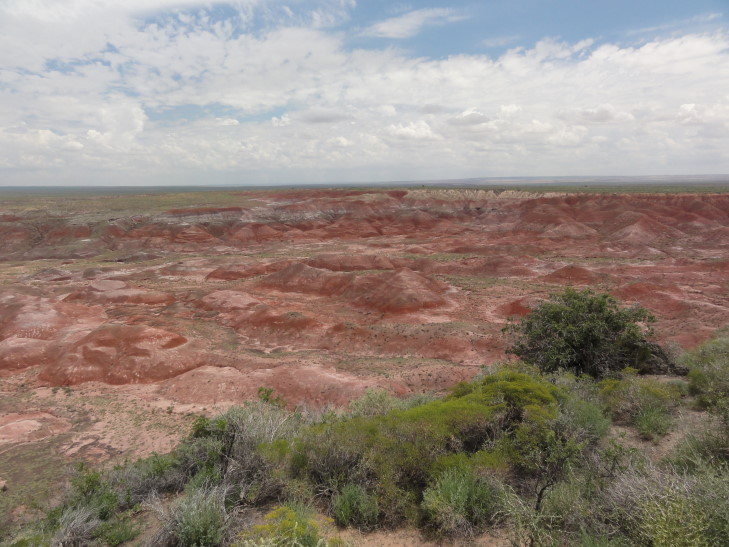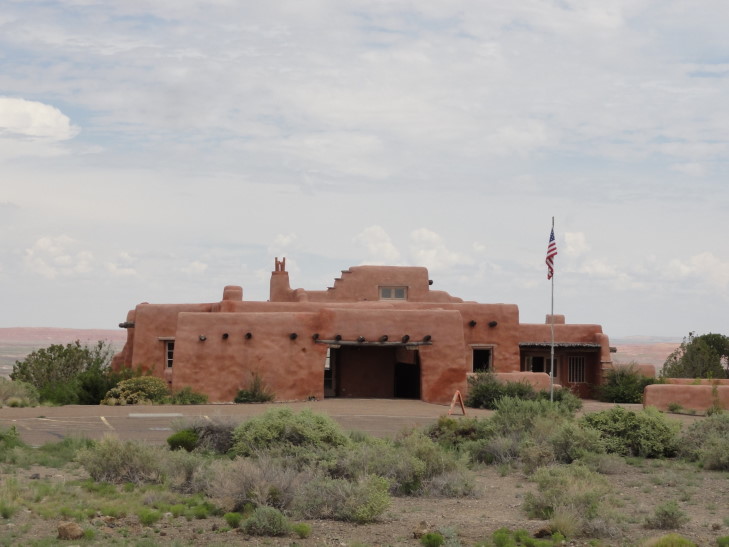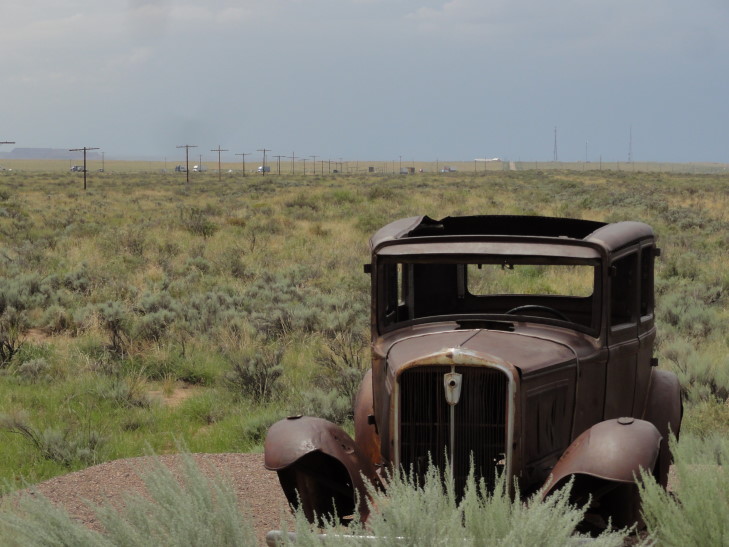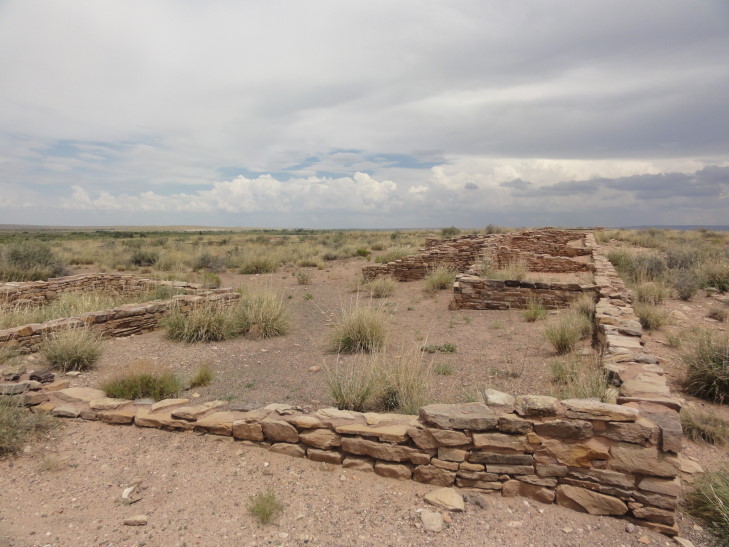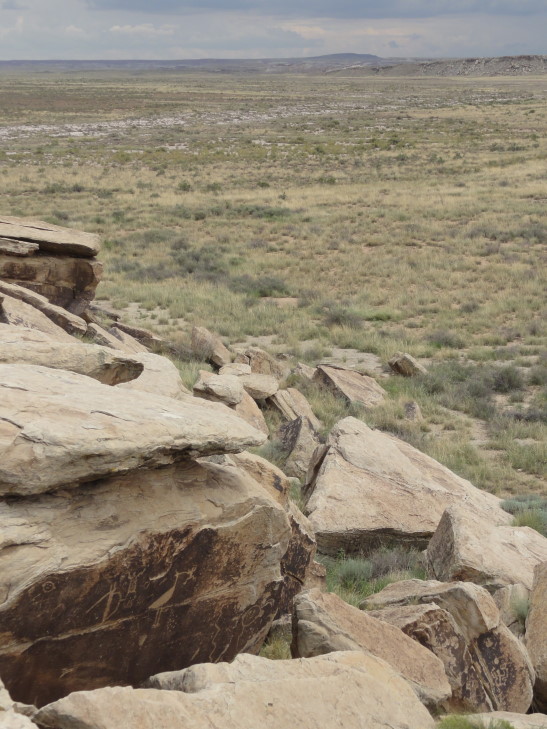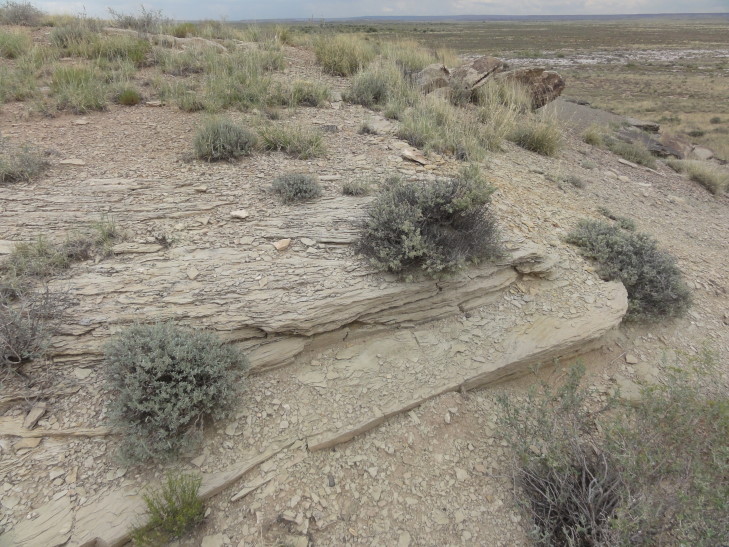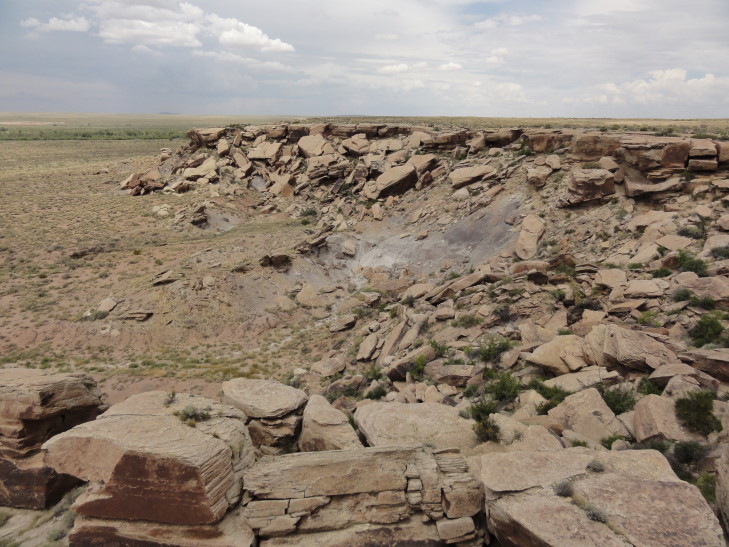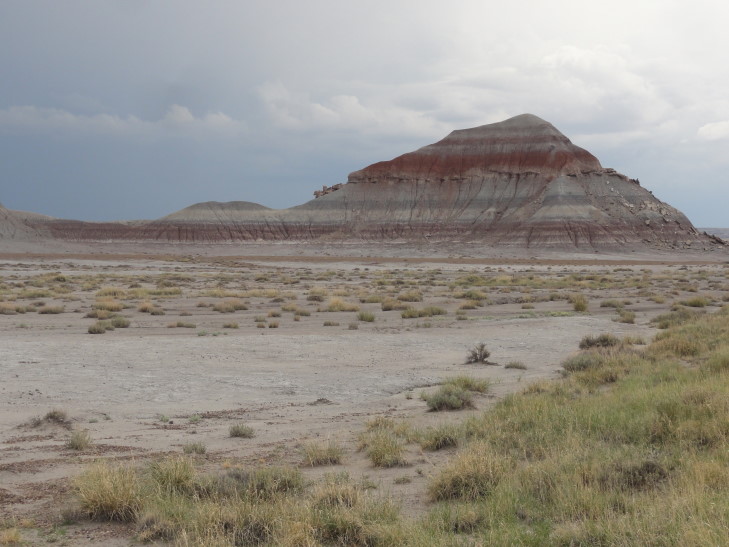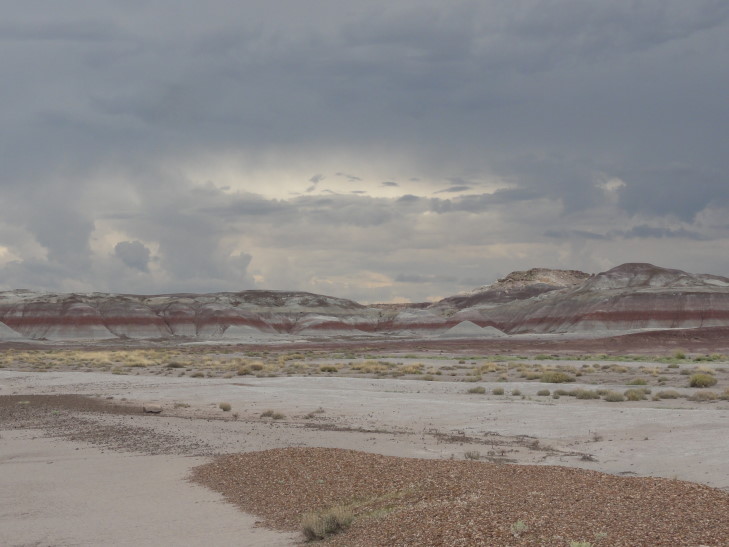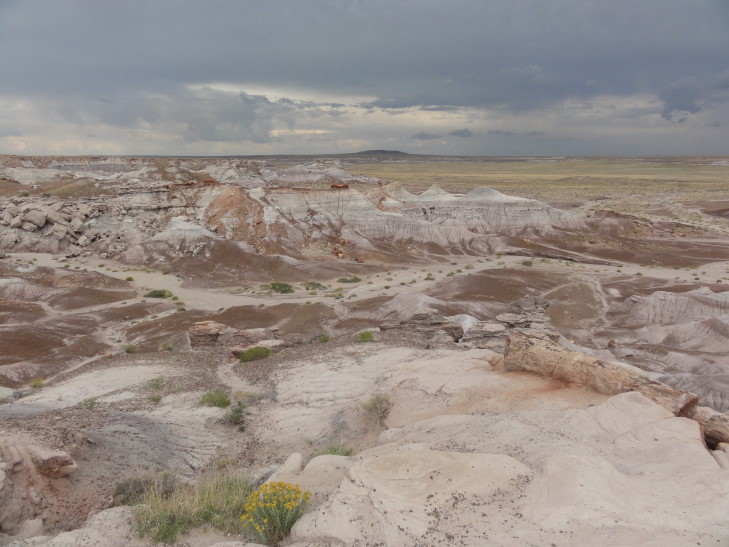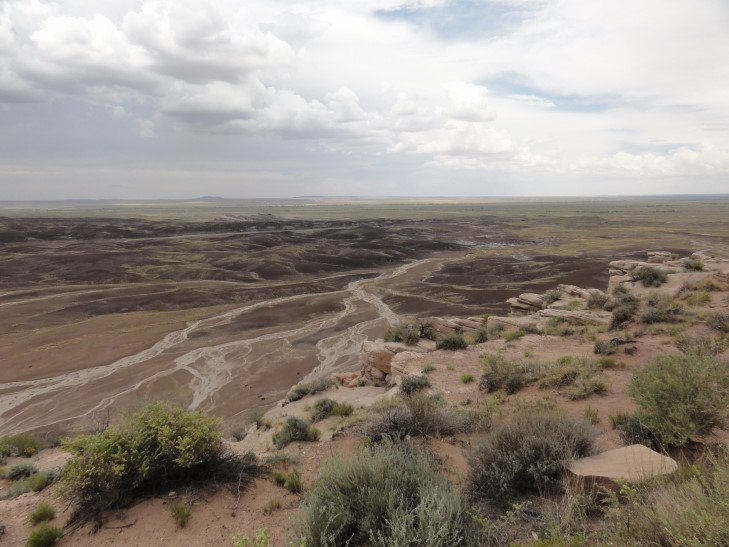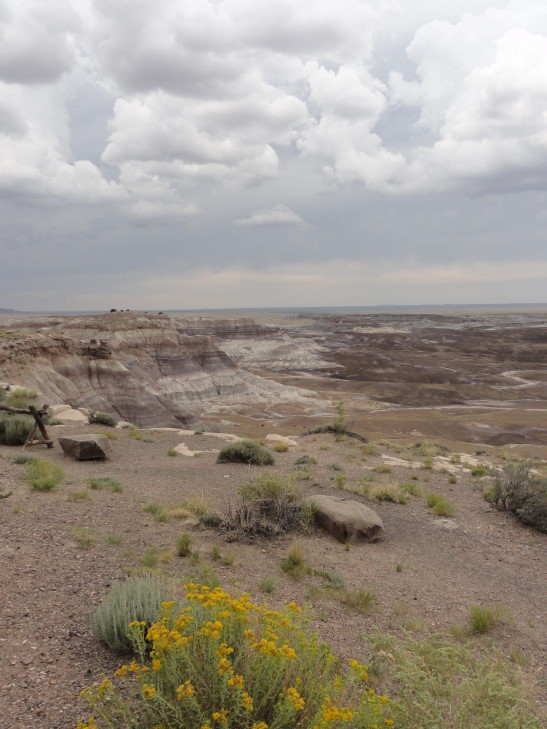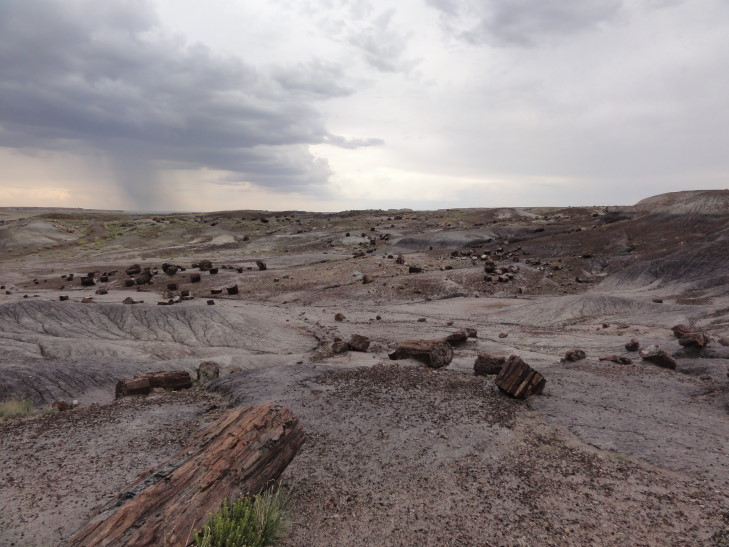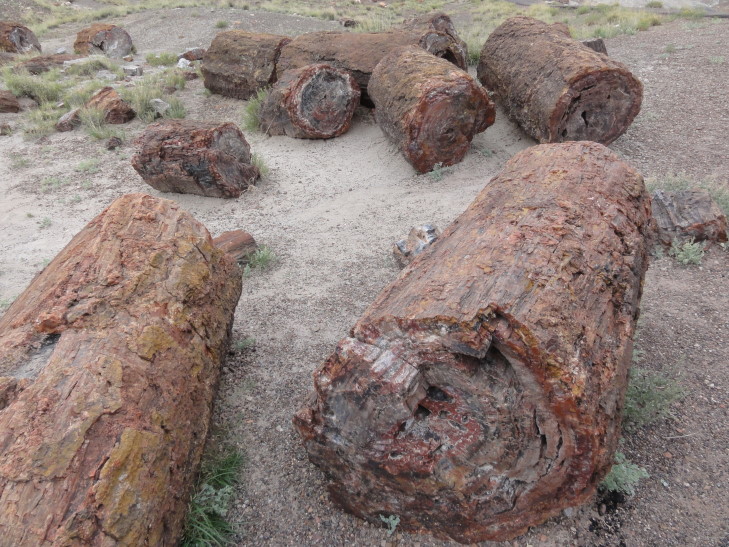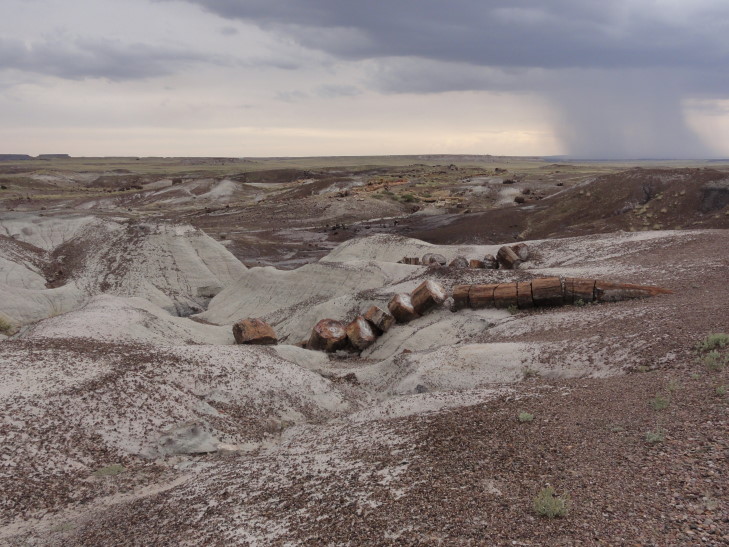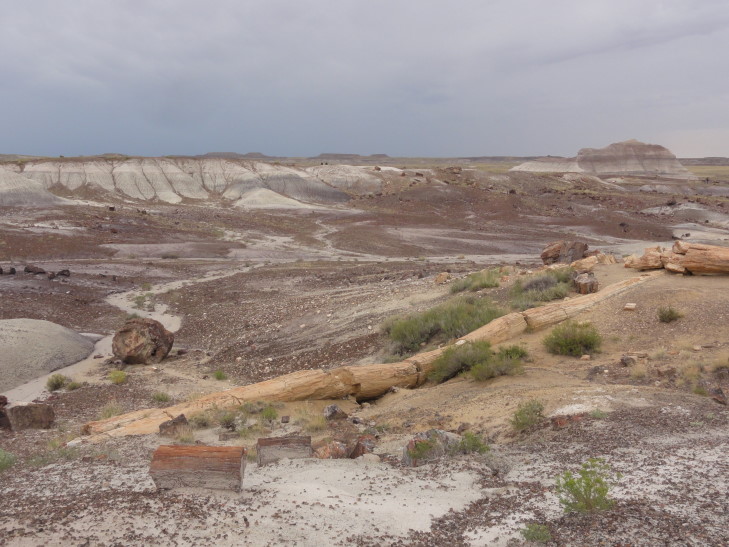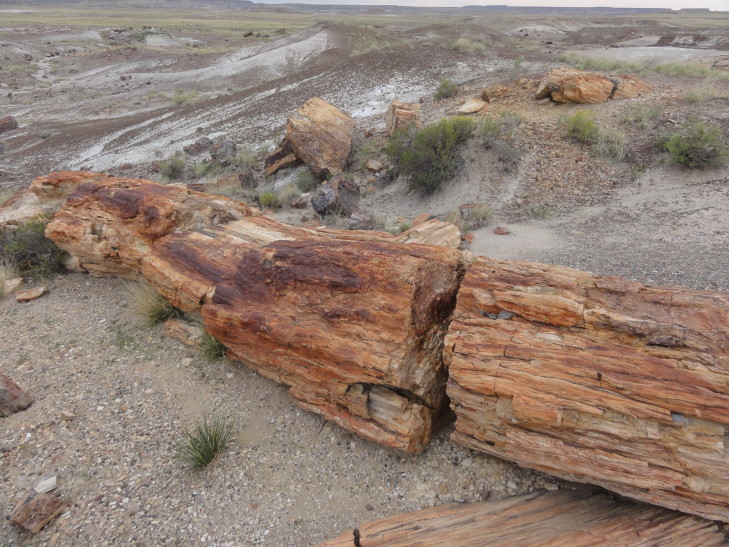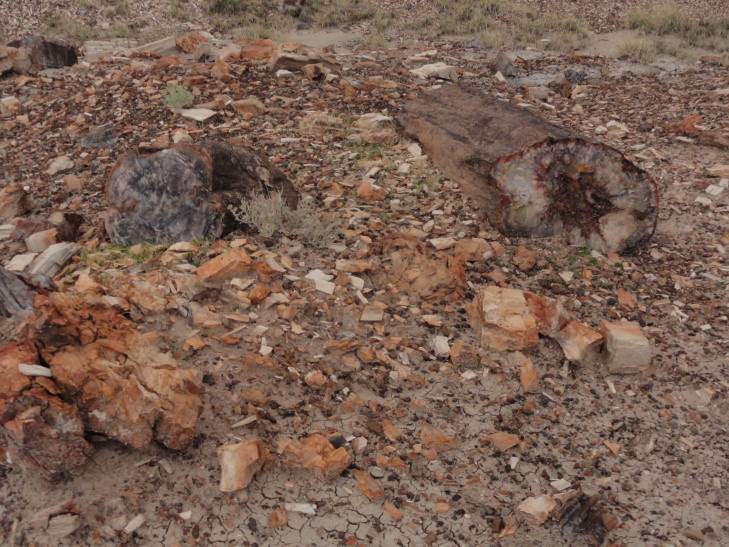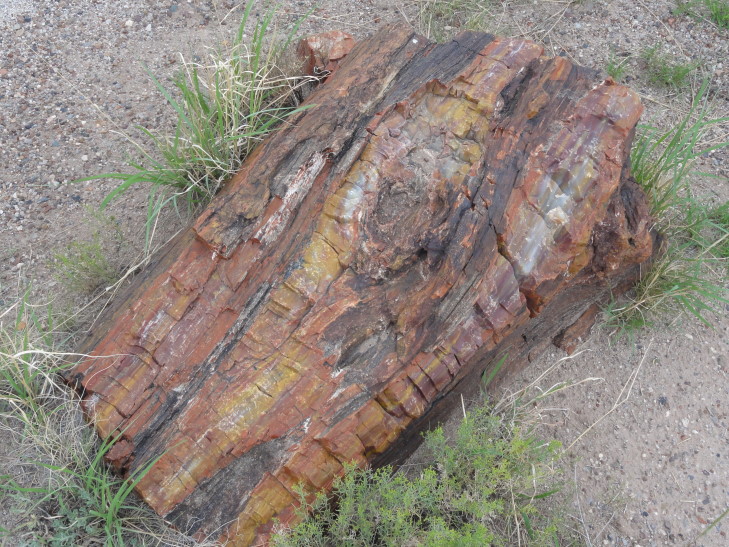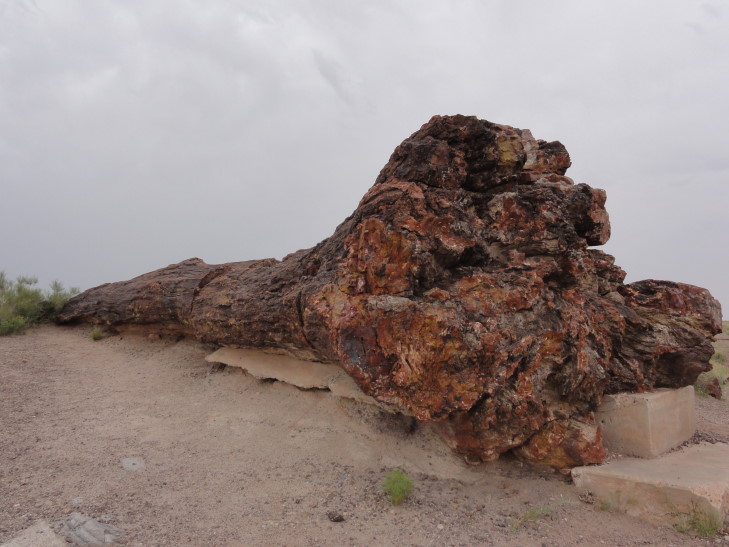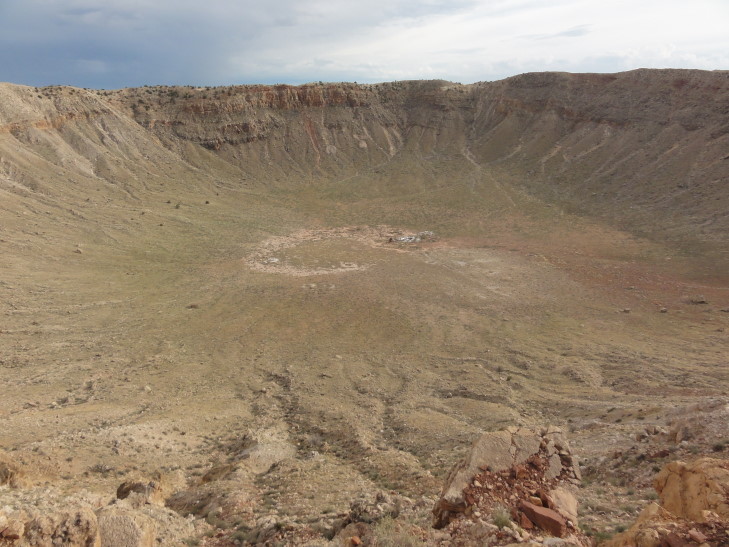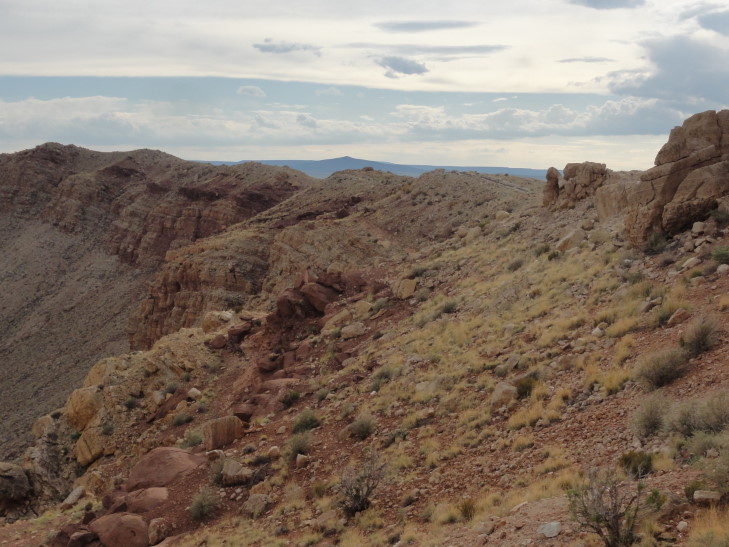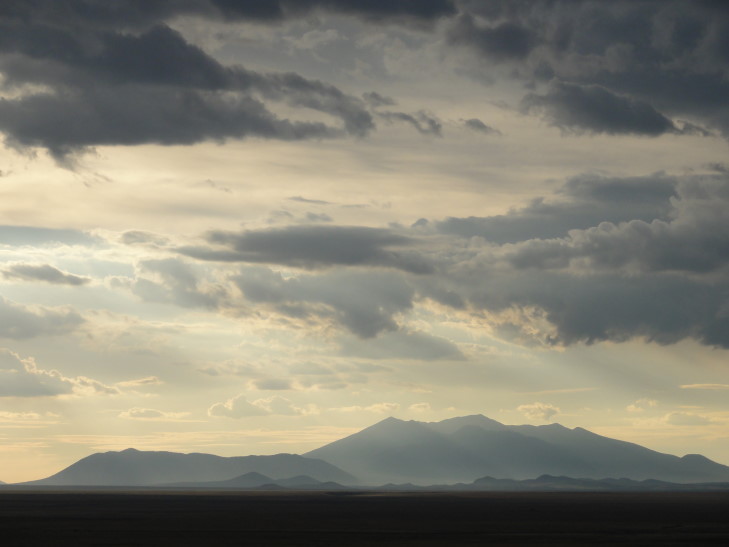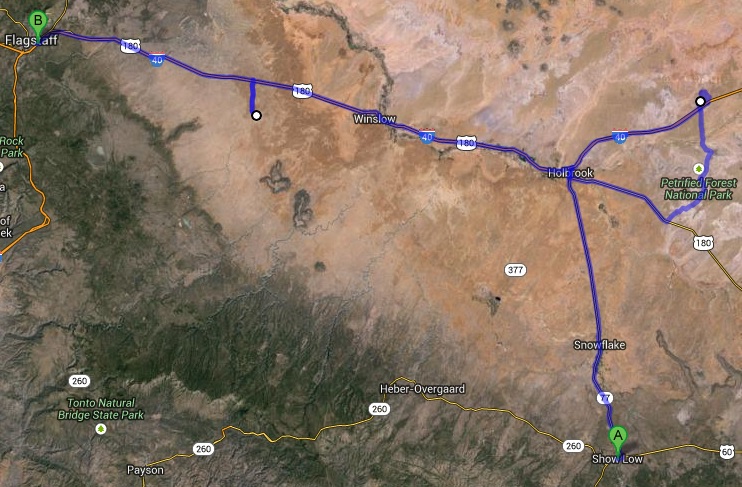We headed out a bit later than I’d have liked, mainly due to me taking my sweet time getting us packed up and out. Took the short drive up route 77 to Holbrook (during which the terrain went from hilly and forested to barren scrub land) and then hopped on I-40 east for a few mile to the entrance to the Painted Desert part of Petrified Forest National Park. We poked around a tiny bit in the visitor’s center and watched a film. They had a serious of eight or so retro posters of other National Parks on the wall and it was startling to realize that we had been to every single one with the exception of Grand Canyon (well, I’ve been there, but not the whole family), and that was to be rectified on Saturday. We really have been to a lot of cool places. They had Yosemite, Lassen, Grand Teton, Yellowstone, Ranier, Smokey, Zion, Grand Canyon, at least represented.
Set out in our car around the scenic drive — not a loop this time but a route that hooked around and down to the visitor’s center at the south end where the Petrified Forest part of the National Park was. First up was the Painted Desert, coined by a Spanish explorer in the 1500s. Amazing splashes of red and purple and beautiful views extending out a hundred or more miles to the north towards the Navajo Nation. Also there was a beautiful old building called the Painted Desert Inn that was built in the 1930s. Shortly before crossing I-40 and into the southern part of the park we crossed where old route 66 ran, marked by a rusty old car sitting in the grass and a chrome bumper with a plaque.
Just south of I-40 are the remains of a pueblo, Puerco Pueblo. Home to two hundred or so people with just over one hundred rooms arranged around a central plaza, the pueblo was occupied around 1000 through 1300AD or so. In addition to the rooms’ foundations there was also a kiva as well as a nice group of petroglyphs. One of the petroglyphs was carved such that a beam of light would hit it at the height of the summer solstice. There was one particularly awesome petroglyph of a ibis-like bird eating a frog (or something that looked like a frog). Some speculated that it was just that, while others thought it may be a representation of a Hopi story about a giant bird that would eat kids that were rotten. I like that interpretation! To close out the Indian ruins portion of the park we visited Newspaper Rock which had even more petroglyphs but, as they were a bit further away, it wasn’t as impressive.
The southernmost portion of the park is the whole reason the park exists in the first place — the petrified forest. It isn’t really a forest, but rather more like a petrified log fall. None of the logs are standing, rather they are part of a three hundred foot deep layer — a forest 225 million years ago that was covered and had the organic wood replaced with minerals. As the badlands are constantly eroding they reveal more and more of the petrified wood. In the late-1800s and early-1900s tourism greatly increased and much of the petrified wood then visible was removed — sometimes even by dynamite to get to amethyst and quartz crystals in the petrified logs. The government finally stepped in and set aside the area as a National Park in the early 1900s.
The logs were really colorful and it was remarkable how much they did look like wood. I particularly liked the logs just being exposed, barely seen above the grass and shrubs. We saw whole valleys with hundreds of pieces of logs strewn about. Amazing. At the very southern tip of the park we saw “Old Faithful”, the largest petrified log in the park. The visitor’s center there also had a small, but fascinating, overview of the fossil record of the park and informed us that the National Park is the home of several holotypes, meaning the first ever fossil found for that species.
The rain that had been threatening for the past few hours — with ominous gray skies and jagged cloud-to-ground lightning (not fun when you realize you are — by far — the tallest thing around) and a wonderful cool breeze — finally broke. Perfect timing, we piled into the car and headed back to Holbrook via route 180 then hit I-40 to the road to Meteor Crater.
As we approached the crater from the north we could clearly see the rim of the crater rising up above the open scrub land. After paying a princely sum of $48 for the four of us to enter we poked around the museum and saw a movie. The museum wasn’t bad, actually, and Addison had fun using a simulator to create meteors and test the effects of their impact. It also showed where other impact craters could be found around the world as well as the effects of a comet being captured by Jupiter, torn apart, then impacting on the surface — one of the 22 impacts from the torn-apart comet created an Earth-sized impact zone. Also I didn’t know that Gene Shoemaker, geologist and planetary scientist, had wanted to go to the moon but had a medical condition that prevented it. When he died, however, he became the first person to be laid to rest on another celestial body when some of his ashes were carried to the moon by a probe. In life he had helped train some of the Apollo astronauts at the crater in preparation for their moon landing.
The meteor that created the crater was moving about 40,000 miles per hour and was 150 feet in diameter and struck about 50,000 years ago. Only a small fragment has been recovered, the rest having vaporized in the atmosphere or been pulverized on impact. On impact a 500km/h wind carrying some molten material would’ve washed over the area. Ouch! The crater itself is nearly a mile in diameter and 550 feet deep, though it was originally about 700 feet deep. Twenty football games could be held in the crater at once, with two million spectators on the slopes. Putting it another way, the central business district of San Francisco would fit in the crater and the Washington Monument, if placed at the center of the crater, would not peek above the rim.
The crater was very impressive, though very, very windy. There were three observation platforms to visit, and great pictures to take, though it proved impossible to get without taking a panoramic photo due to its width. I actually wished for a coat. As the crater was nearing closing time we hit the road for Flagstaff.
Along the way to Flagstaff we saw the most beautiful sunset right behind Humphreys Peak, largest mountain in Arizona at about 12,600 feet. As Flagstaff is already over a mile in elevation it doesn’t look that tall from the road. Arrived in Flagstaff before 8p and decided to eat at the Outback practically adjacent to our hotel. Great food! Fully satiated, headed to the hotel to check-in and blog the day’s events.
